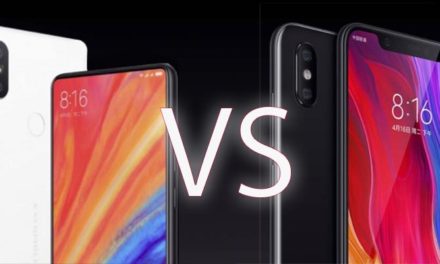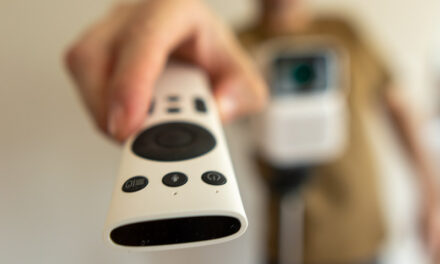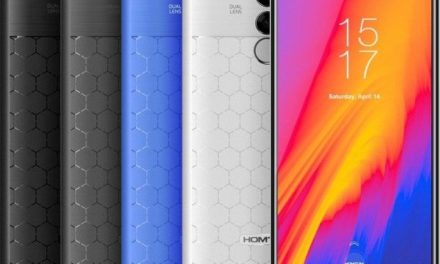
Light years from its predecessor - Xiaomi Redmi 10 phone test
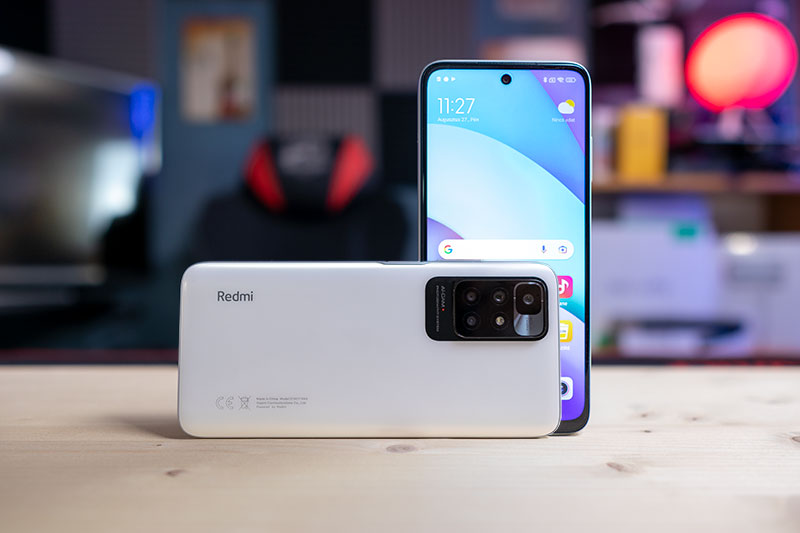
Redmi exploded 10 banks and chased the competition to cry.

contents show
Introductory
As I indicated in the introduction to my Redmi Note 10 test, I missed a year, I didn’t try Redmi’s low- and mid-range phones last year. There was a simple reason for this, they were not convinced. In some abilities, not only did they move forward, but rather stepped back. I was nowhere near feeling the potential that was in the eighth series.
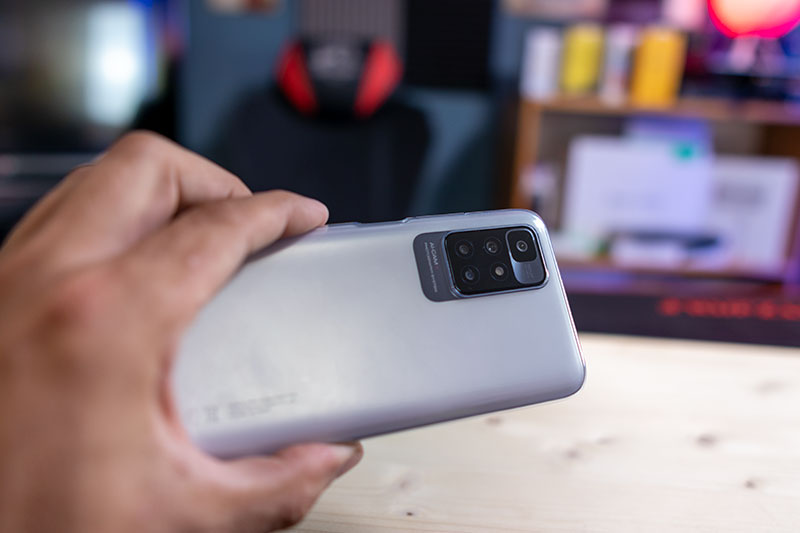
Now, a year later, the 10 Series has once again pounded the hearts of cell phone lovers. Both the Note 10 and Note 10 Pro (I still owe a test of this) got an AMOLED display, the procs got better, and in the Pro version the display is 120 Hz and the main camera is 108 megabytes. So a real hit.
That’s why we’ve been expecting what’s cheaper - but not the cheapest, it’s expected to be the Redmi 10A - at the entry level. Well, at first glance, a brutal phone has arrived, though, at the time of writing this paragraph, I don’t know the official price yet - I’m before the start of distribution.
So with the value for money of what’s full, you’re only faced with the last chapter.
Packaging and exterior
I don’t waste a word on the packaging, we get this year’s design here too, white cardboard with a picture of the phone on top.
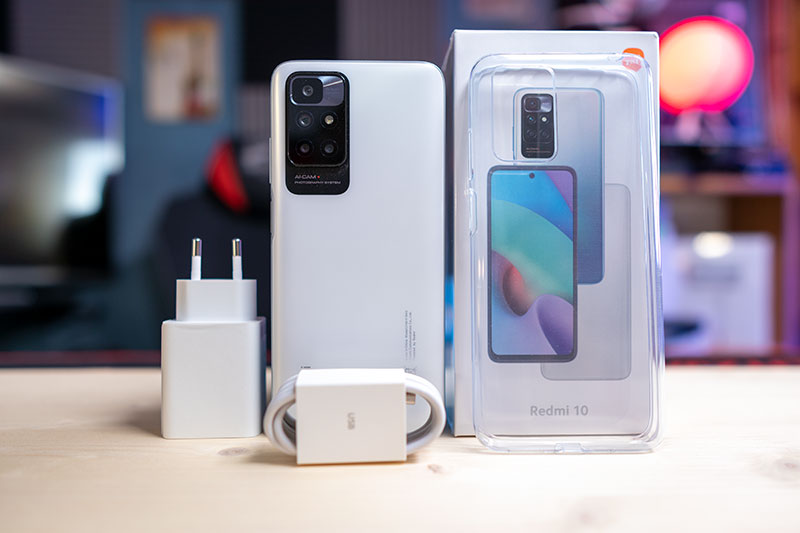
Inside again, just the usual things. An EU standard charging head capable of 22,5 watts fast charging, a USB C cable, a SIM needle, a clear back cover, specifications, and an end. If you are interested in unpacking, you can watch this video, text is nothing but unboxing:
However, there is already something to talk about about the look of the phone. I have already said in the case of the Note 10 that designers do not have an easy task, as basically every phone looks the same. Front display, back cover with camera island. It is from this boredom that something new has to be created every year.
Well, the Redmi team did a great job this year. Bazi deserves a big five star for their performance, as this year's devices - including the Redmi 10 - have become exciting, fresh and modern. Not only do I raise it, but I swing my hat in front of them.
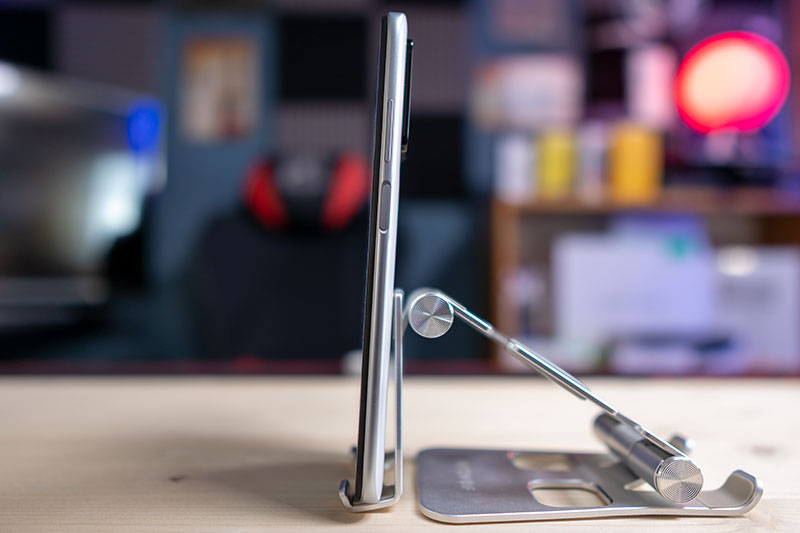
The front camera is already peaking in the camera hole, above it the speaker grille is so discreet that it is almost invisible. The matte silver surface of the frame is also quite good. Not extra matte, but it doesn't accidentally shine, it's nice! The price of cheapness is that the frame is plastic, but it imitates anodized aluminum so nicely that at first glance there is no one who will tell you what it is made of.
The back cover can of course be more colors, I got Pebble White, which gives the device an elegant, clean look. It has a very faint pearlescent effect, but just enough to keep it from getting dull.
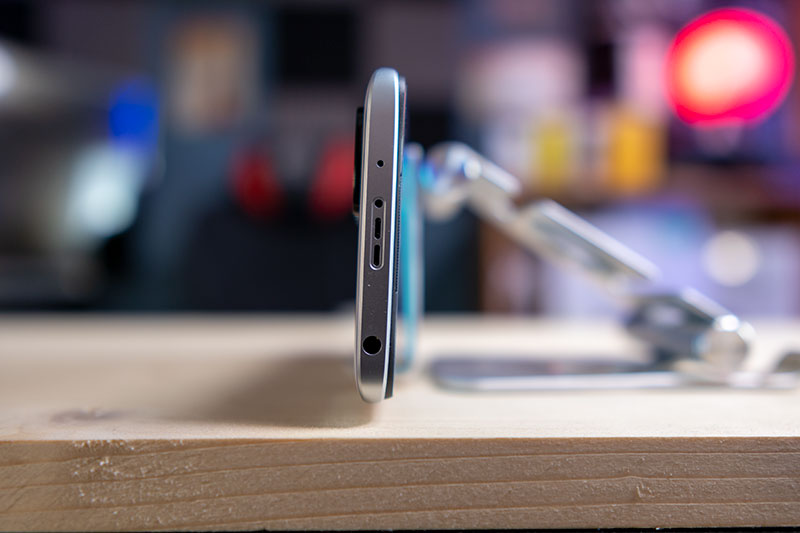
In addition to white, you can also choose Carbon Gray or Sea Blue, which, like white, gives the device a restrained, almost elegant look. What’s important, and surprising enough, is that when you feel the back cover feels a little silky, soft (though it’s not), and what’s very good is that, oddly enough, it also collects less fingerprints than usual.
And the camera island, as in the case of the two Notes, has become lavish here, perhaps only the text below the cameras is superfluous, because that makes the island look bigger than it really is. Less might have been more.
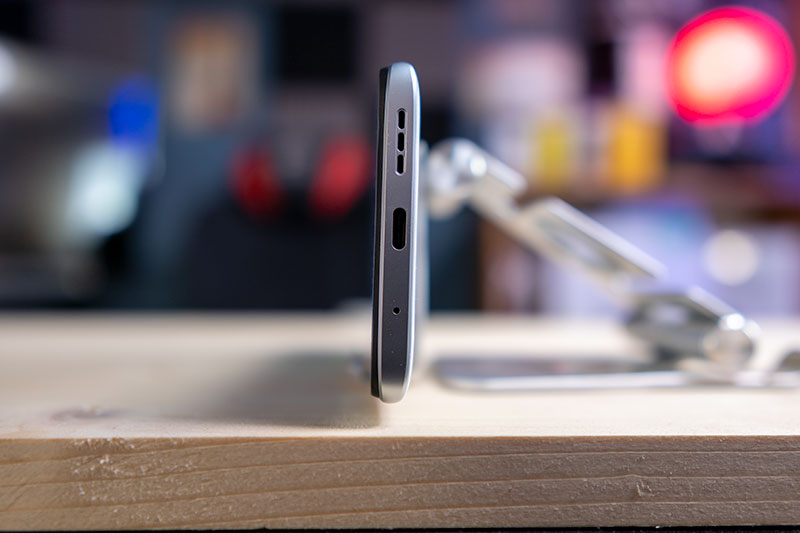
Not because of the size, but the black island is sure to catch the eye on the white back cover, which is perhaps a little more prominent from the back cover than usual in recent years, but this is well offset by the silicone back cover, so not the plexin will wiggle the phone, if we put it on the table.
Turning the phone over, we find a completely flat glass (Gorilla Glass 3). Neither 3D nor 2,5D has any rounding, and I appreciate that as a positive, it will be much easier to find a normal and of course cheap front glass if the factory-fitted foil is worth replacing.
The mandatory “tour” shows that everything is in place.
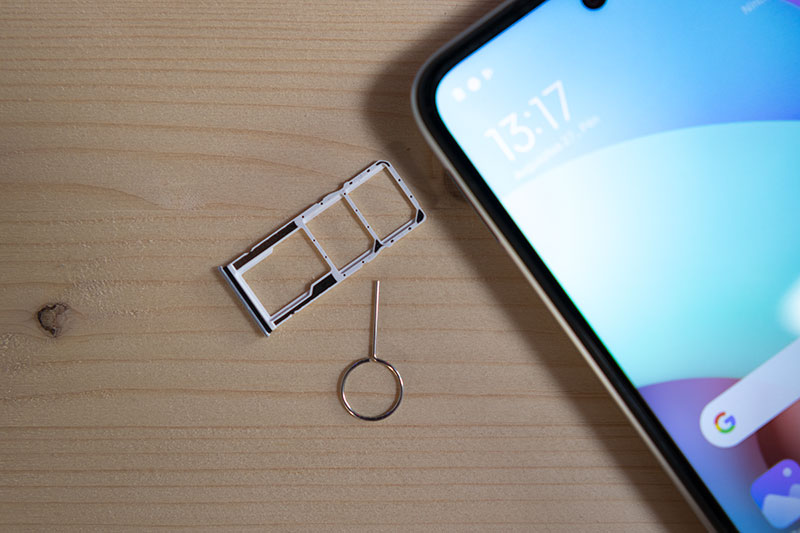
Above is infrared, speaker grille, microphone and jack. Below is the USB C buckle, another microphone and another speaker grille. On the side is the power button with fingerprint sensor, above it is the volume control, and on the other side is the SIM tray, into which, despite being a cheap phone, we can insert two SIM and one memory card at the same time.
The hardware can come!
Iron and tests
The Redmi series has always been about value for money. The principle is to give the best possible, the best possible, which, with the exception of last year’s alibis, has been implemented every year so far, and for essentially all devices. Why shouldn't this be the case with Redmi 10 as well?
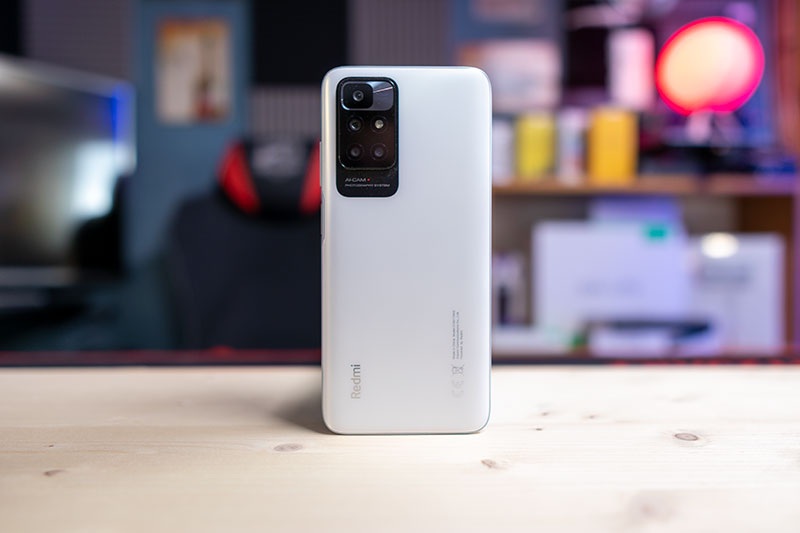
Before we get into the hardware description, let’s take a quick look at the specification, then we can expand on the details!
- Dimensions of the device: 162,0 × 75,5 × 8,9mm, 181g; Gorilla Glass 3 front, plastic and plastic frame at the back
- Display: 6,50 ″, IPS LCD, 90 Hz, 1080 x 2400 px resolution, 20: 9 aspect ratio, 405ppi
- Chipset: MediaTek Helio G88 (12 nm): eight-core (2 x 2,0 GHz Cortex-A75 and 6 x 1,8 GHz Cortex-A55); Mali-G52 MC2
- Memory: 64 GB 4 GB RAM, 128 GB 4 GB RAM, 128 GB 6 GB RAM; eMMC 5.1; microSDXC expandability
- OS / software: Android 11, MIUI 12.5.4
- Rear camera: Wide (main): 50 MP, f / 1.8, PDAF; Ultra wide viewing angle: 8 MP, f / 2,2, 120˚; Macro: 2 MP, f / 2,4; Depth: 2 MP, f / 2.4
- Front camera: 8 MP, f / 2.0, (wide)
- Video recording: Rear camera: 1080p @ 30fps; Front camera: 1080p @ 30fps
- Battery: 5000 mAh; Fast charge 18 W, reverse charge 9 W
- Other: Fingerprint reader (on power button); FM radio; NFC; Infrared port; 3,5 mm jack
Central unit, memory, storage
The Redmi 10 got an absolutely fresh central unit that is almost still warm. It was officially unveiled in mid-July, and now, at the end of August, the phone built on it is here! And this unit is none other than the MediaTek Helio G88.
How new is the Helio G88? It's just that the Redmi 10 is the first phone on which this chipset is built.
If anyone is complaining that Snapdragon is not the proci, I have to reassure you that the Helio G series for 4G networks has succeeded in a parade, in many cases instructing Snapdragon competitors in the category. So don't let anyone cry about it, it will be good for us!
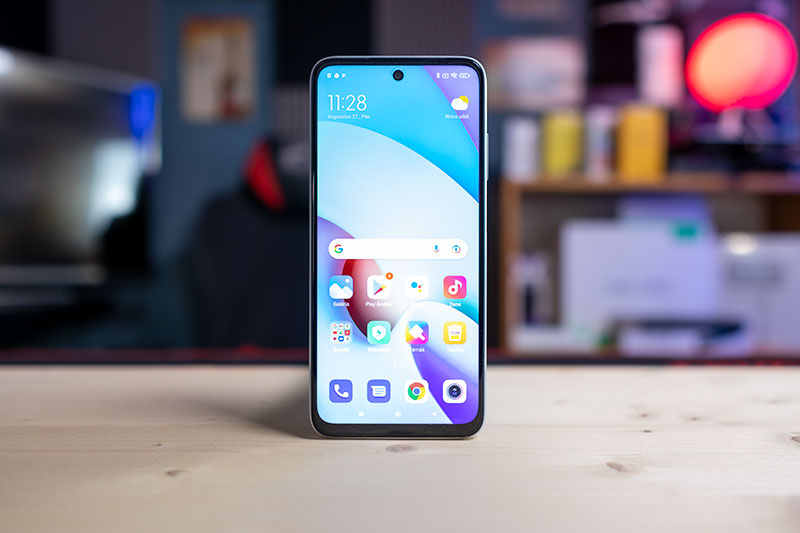
The proci has eight cores, two of which are Cortex-A75 cores, at a maximum of 2 GHz, and the remaining six are Cortex-A55, which operate at a maximum of 1,8 GHz. The graphics accelerator is a Mali-G52 MC2 with two cores and a 1 GHz clock. Support for LPDDR4X memories (up to 1800 MHz) has remained from its predecessor, and support for eMMC 5.1 storage has also remained.
So the question of what has evolved is legitimate, since its predecessor G85 knew exactly the same thing. Well, one of the differences we find in support for displays is that the G88 is already capable of supporting 90 Hz image refresh, if the panel knows it. The other change is that instead of 48, manufacturers can add up to 64 MP cameras.
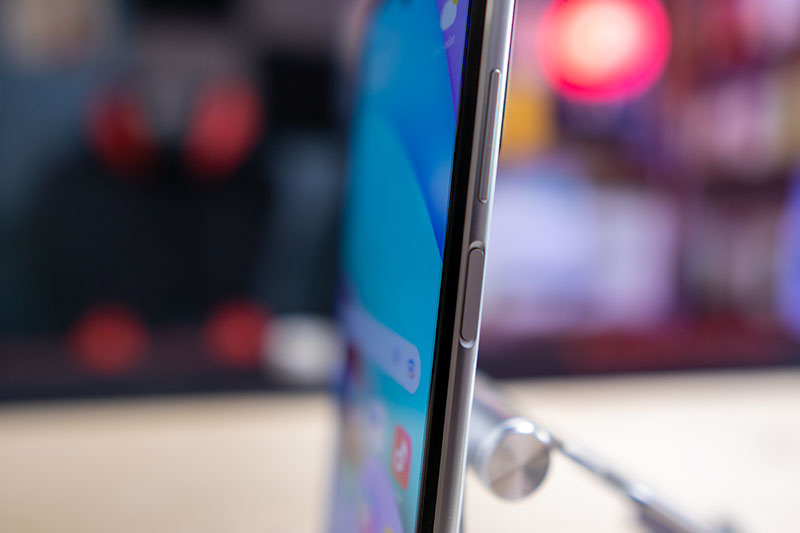
So to sum it up: We’re glad that the proci is brand new, and we’re very glad that it’s a central unit that kicks the house, that is, more of the category, the entry level side. And not down!
With the Redmi 10, it’s a pleasure that 3GB of memory with 32GB of storage is a thing of the past. This is a great pleasure just because you will now be expected to get the 4/64 build at the entry level as well. However, the Redmi 10 will put a shovel on this as well, as we will be able to buy up to a 6/128 GB version of it, which has so far only been a privilege for the mid-range.
Let’s say the question is whether this version will be available to us as well or whether it will remain for China.
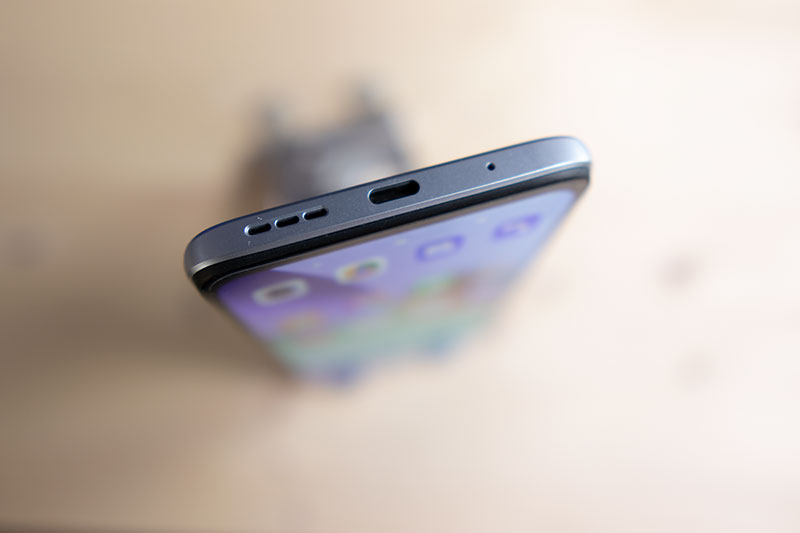
Hardware tests
Both the tests performed and the games run during the test show that the Helio G88 has serious power. Obviously not a flagship unit, but it runs most games at an acceptable speed. It follows that with the spin of Android you won’t have a problem, everything runs nicely, smoothly.
The bad news is that neither 3DMark nor Antutu worked properly on the phone, so you have to give up on these tests. Not working properly does not mean that they worked incorrectly, but that I suspect Xiaomi is blocking their operation. For 3DMark, the tests cannot be downloaded, and for Antutu, the phone alternately states that Antutu 3D is not installed, although it does.
I found information on the net that despite a well-functioning network connection, access to 3DMark servers on Xiaomi phones may be blocked. Xiaomi, of course, denies they think they are blocking anything. In fact, I was unable to download 3DMark tests to my phone via multiple wifi and mobile connections, in any case I encountered an error message indicating access to DL servers. Regrettable.
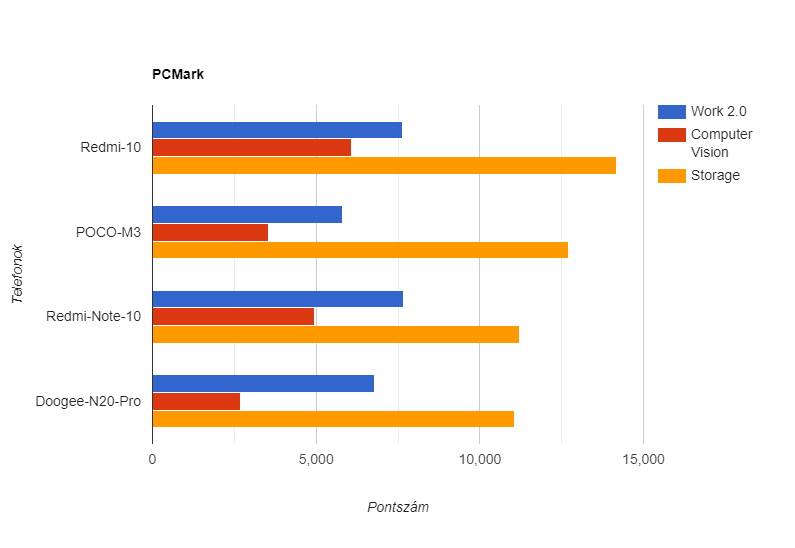
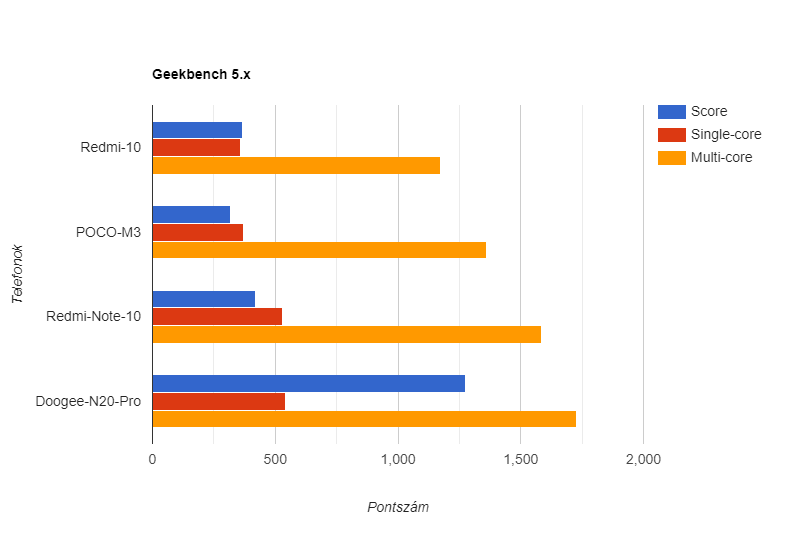
| redmi 10 | Redmi Note 10 | LITTLE M3 | |
| Processor (SoC) | MediaTek Helio G88 | Snapdragon 678 | Qualcomm Snapdragon 662 |
| test Program | |||
| Geébench 5.x (score / single / multi) | 368 / 1159 / 1173 points | 418 / 530 / 1586 points | 316 / 371 / 1359 points |
| PC Mark Work 2.0 | 7651 point | 7676 point | 5806 point |
| PC Mark Computer Vision | 6079 point | 4938 point | 3552 point |
| PC Mark Storage | 14165 point | 11218 point | 12708 point |
From the above values, it is clear that the usual superiority of MediaTek processors in PC Mark has now prevailed. In the case of Geébench, there is some superiority in favor of Qualcomm. In general, we tend to see a similar difference in terms of Antutu and 3D Mark results, meaning that if I could run them, we could observe a difference of similar proportions and directions. It’s worth averaging these differences, the truth will be somewhere in the middle. Unfortunately, 3D programs would have been needed for the whole picture, without them this review is a bit one-legged.
Display
According to the dry data, the image diameter of the IPS panel is 6,5 inches, 102 cm2 of the surface, ~ 83.4% of the front panel display ratio, 1080 x 2400 pixels of resolution, 20: 9 aspect ratio of 405 ppi of pixel density and Gorilla Glass 3 is the panel above.
I omitted a piece of data directly from this list, which I think is really big, and that’s the image refresh. The Redmi 10 is the first phone from the manufacturer to receive an HRR display, meaning it has a 90 Hz image refresh rate. That is, it is no accident that the new proci was included, 90 Hz support was needed in the device!
Despite the great image refresh of the IPS panel, fortunately this is not reflected in the price of the device!
Anyone who has ever seen an IPS display knows that the benefits of the technology, such as a large viewing angle, good contrast ratio and color fidelity, are also present in cheaper phones. What manufacturers can spoil is the backlight. Fortunately, this is not a problem with the Redmi 10 either.
The display hasn’t gotten brighter or better than its categorymates, but that’s enough. The maximum available ~ 480 cd / m2 is perfectly adequate. The contrast ratio is not exceptionally good either, we get a value for the price and category mates.
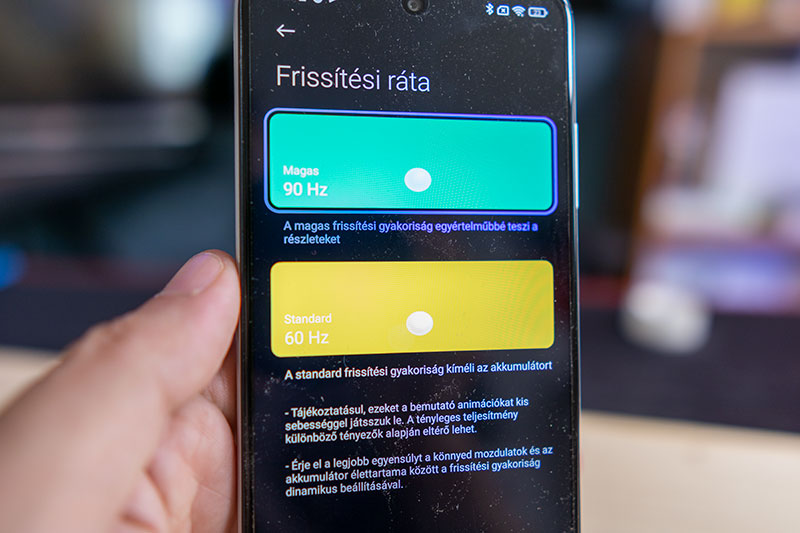
So the only but more interesting thing is the 90 Hz update. This can be set from software, you can choose between the usual 60 and 90 Hz. On the downside, in addition to playing videos, the phone always uses the higher 90 Hz (if selected), if necessary, if not. This has an adverse effect on uptime, but as you will see below, we cannot complain about it anyway.
Other skills
I didn't let the thing go. It has everything you are used to, wifi, Bluetooth, NFC. (It turned out later that the phone sent for the test was without NFC, but the link at the end of the article could already buy an NFC device.) but there is unfortunately no NFC. This will be welcomed in the Redmi Note 10 Pro this year, with no Redmi phones underneath. The battery has a capacity of 5000 mAh, enough for two days, of course with normal use, and here by normal I mean that you are not watching or playing video in zero to twenty-four.
In the case of video playback, the available playback time was about 12-12:30 hours. I don’t give an exact value because I used a dive value of roughly 3 hours of video based.
All in all, it can be said that the battery life of the phone has decreased compared to its predecessor and its classmates. However, the fact that the two are still loosely available, with a little savings, even 2,5-3 days says it all. I think the 90 Hz image refreshment makes so many sacrifices acceptable.
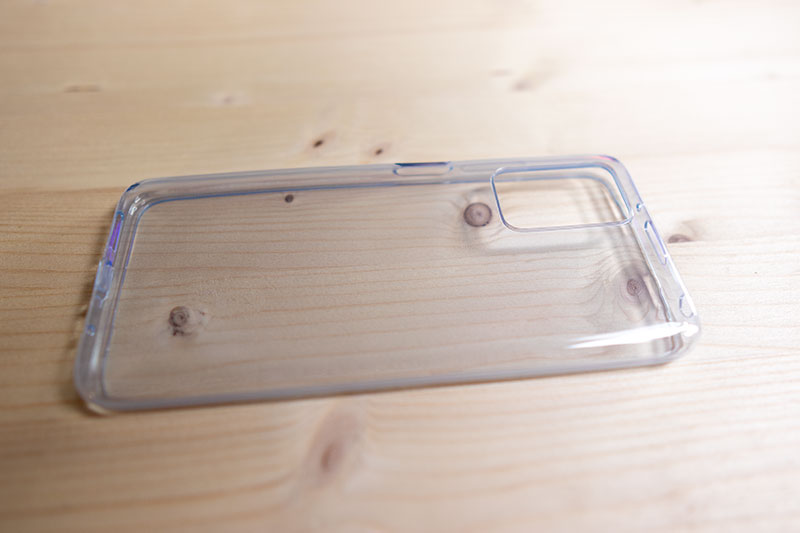
There are two interesting things about the battery:
- Although the Xiaomi comes with the usual 22,5-watt charging head, the phone can be charged “only” with an 18-watt quick charge. Probably the cost-effectiveness is behind the thing, you don’t even have to make a kind of filling head.
- The device is also capable of reverse charging, ie with 9 watts. This means we can connect it with other devices with a USB C cable, which can be charged with 9 watts from the phone. For larger manufacturers, this capability has so far been available from the upper-middle class, so Redmi has covered the paper form here as well.
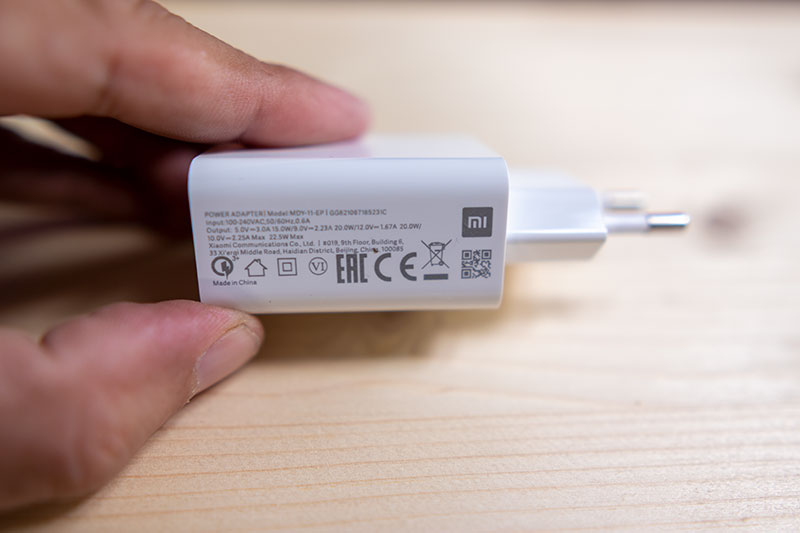
There is FM radio, for navigation we get support for four satellite systems. With regard to the exterior, I have already written that there is infrared, I also indicated with the lower upper speaker grille that the sound is stereo. Let's say it could be one of the grid dummies, but Xiaomin has a stereo sound base lately. Finally, there is also a jack for earphones.
The sound quality is related to the speakers and the multimedia. Well, I was basically happy with that. The middle range sounds the clearest, so I was most satisfied with the speech sounds and singing, but overall the sound picture is pretty well put together.
I dare to say with a calm heart that the sound quality is also above category.
Kamerák
Right at the beginning, it is important to mention that despite the entry level, we also get a macro and an ultra-wide camera, which, in such a configuration, have so far only been available in the mid-range. Another issue is that I didn’t like them there, I felt little. But what’s low in the middle class can be ultra much at the entry level, and I think so.
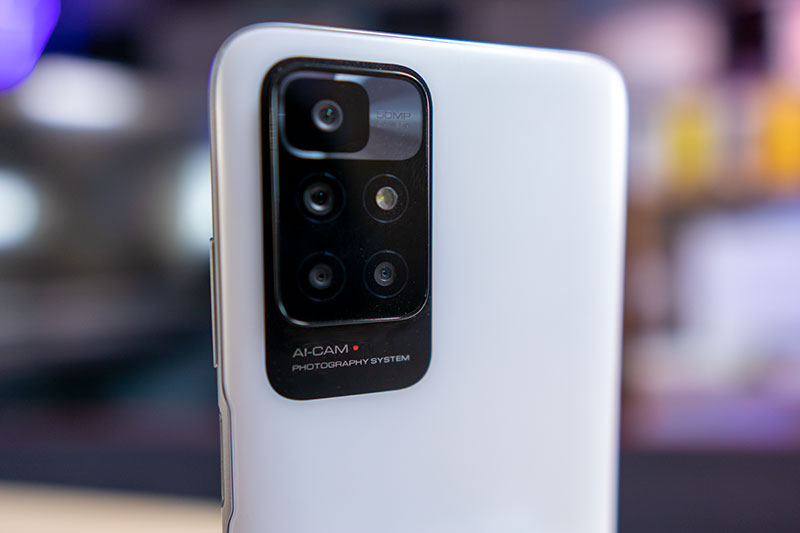
And if that’s a lot, I haven’t mentioned the main camera yet, which is an extremely fresh piece like the proci. If you’re not interested in the details, all you need to know is that it’s 50 megapixels, which in this case means - at least on paper - it’s better than Redmi Note 10’s 48-megapixel camera, even though that phone competes one category higher.
If you are interested in your camera read the next few paragraphs, if not, then scroll!
So. Samsung's new unit, the ISOCELL JN1, appears to be working in the main camera. Certainly just because, as I indicated very early in the article, I am writing before the release and specifically no information was provided by the manufacturer other than 50 megapixels. Regardless, it’s nearly one hundred percent that this will be Samsung’s sensor!
Well, the ISOCELL JN1 is one, as I’ve written several times for a 50 megapixel piece. The size of each pixel is only 0,64 μm, which is the smallest the Korean company has ever produced, and the entire sensor is 1/2,76 ”in size.
The sensor is recommended by the manufacturer for all smartphones from the middle to the upper category. The sensor has ISOCELL 2.0 technology with advanced pixel isolation to reduce “crosstalk”. This procedure should improve light sensitivity and color fidelity, at least in theory. They have been developed on material between color filters, thus preventing the light from one pixel from infiltrating adjacent pixels.
The ISOCELL JN1 organizes four pixels into one large 1,28 μm pixel, so the end result will be a 12,5 MP image, which the manufacturer says is free of image noise, or at least less noise than previous solutions. The solution also allows real-time HDR by capturing two exposures simultaneously.
Double Super PD phase-sensing focusing has also been improved. Samsung has redesigned the microlens at the top of the pixels, which according to marketing material improves the speed and accuracy of autofocus.
The ISOCELL JN1 can record videos at speeds of up to 4K @ 60fps and 1080p @ 240fps, but that of course also depends on whether the phone has a chipset that allows it (I'll shoot the joke, Redmi 10 doesn't know).
This is the paper form so far, but what does practice show?
Camera tests
main Camera
Well, on the one hand, it's a great pleasure that an entry-level phone has a 50-megapixel main camera, on the other hand, with a calm heart, I dare say that the capabilities described above, with the sensor, don't really work in practice.
Let’s start with the good stuff, the sharpness of the images is outstanding in the category. The colors I like, though in fact, don’t give back 100 percent of the reality. Unfortunately, the dynamic range and contrast are not very good either.
| Main camera during the day | |
 |  |
 | 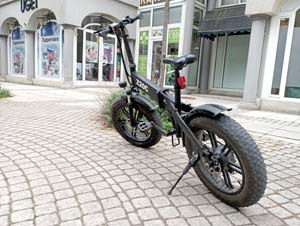 |
 |  |
The noise of the images is in my opinion quite acceptable, which is why I think the daytime images can be used. I like software background washing, although it’s obviously light years away from the quality produced by a more expensive lens. What I don’t like is that in portrait mode you make mistakes in the software, you can’t find perfectly what the theme is and what the background is.
In the case of the evening photos, however, I was surprised, because the shots were very fair. The saturation of the images is good, and the software finally balances well between detail and noise, meaning we get acceptably detailed photos with minimal noise.
| Main camera at night | |
 |  |
 |  |
The situation is even better if we use the night mode. The time it takes to take pictures does not increase significantly, but the result is noticeably improved. I don’t know if we can attribute this quality improvement to the new sensor, but I’m sure I found the photos I took to be outstandingly good in this price range.
I’ll really just incidentally note that I’ll be wondering what this sensor will produce next to a stronger iron in another phone, because I don’t feel justified by the manufacturer’s optimism yet that it will be suitable for high-end mobiles as well.
Ultra wide camera
Although only 8 megapixels, interestingly, I’m not saying it’s useless, in fact. In some ways, such as in terms of color saturation, you get even better results than the main camera. True, the resolution, so the detail, also lags behind the 50 MP camera, but it’s undeniable, in recent years, it was the best I’ve gotten at the entry level.
Macro camera
Low resolution (2 MP), no auto focus, no image stabilization. Just like Xiaomi macro cameras in general. Pumpkin is average throughout, good fun, but that's all.
Selfie camera
I haven’t mentioned the front panel selfie camera yet. It’s 8 megabytes, and thanks to the portrait mode, we can take pretty good photos with it. Of course, this is not a big bang either, but the separation of the background and the subject will be quite good in the finished image, the depth of field is also acceptable. So usable piece.
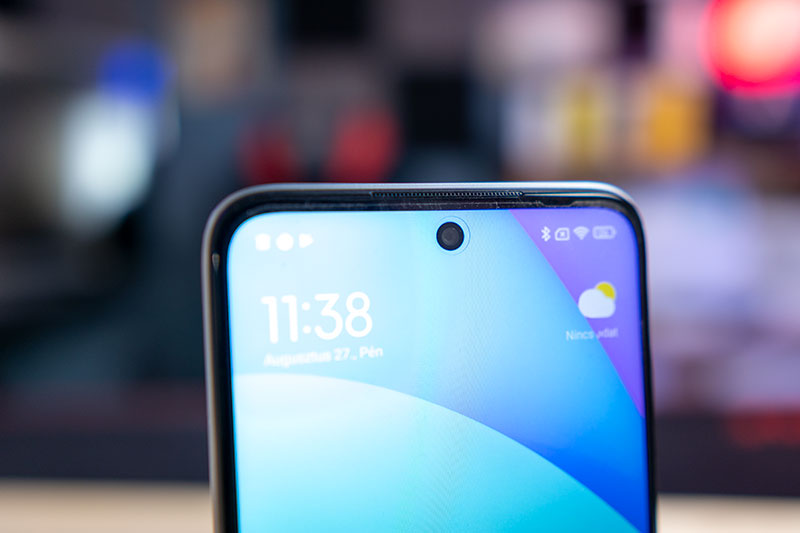
Videos
Video quality can be measured against photos in terms of both color and contrast. Of course, it is already out of focus, but the biggest problem is not that, but the fact that although only 1080p / 30 FPS is available, vibration reduction is not the case.
What’s very surprising is that the ultra-wide camera performs better than the main camera. Well not much, but the colors are definitely better, more saturated, more contrasting throughout. On the other hand, I think no one is surprised that 2x zoom is essentially useless. There is more to the problem here than just the colors and contrast, the sharpness is below criticism.
Overall, it can be stated that if your hands are not shaking or you can support your phone, you can quite use it to make videos. Before I talk about the front of the house, I note this is obviously good for the phone category.
In the previous chapter on the main sensor, I described that the sensor would be capable of up to 4K 60 FPS with the right iron, and I would be chirping if we got the 1080p / 240 FPS, but obviously it would require more serious hardware, and of course the phone category nor does it justify these abilities. Unfortunately.
Summary of cameras
These cameras are completely average in terms of capabilities. We’ve been able to meet them on quite a few Xiaomi, Redmi or POCO phones, and we don’t get any more than that, not even with the main camera being seen as an absolutely new development. Which is worth mentioning, as I have already written, that at the entry level we are getting such a serious or rather complex camera package for the first time now.
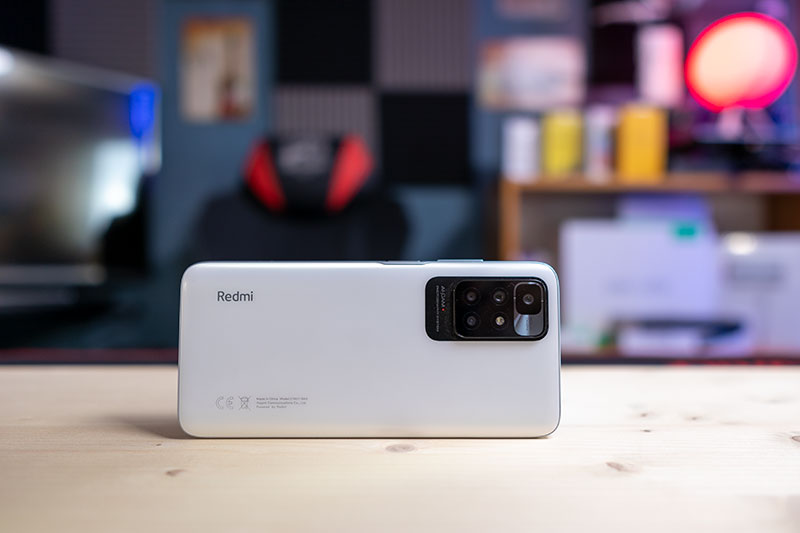
The 2 megapixel is good, but I still prefer to use the main camera and crop out the right part of the image. The result will be nicer than what you can get with a macro camera. The ultra-wide produces surprisingly good images, surprisingly good compared to solutions with similar capabilities to date. And maybe there’s potential in the main camera that we can only enjoy at night for now. Let's hope that with a software update, daytime images can be further improved.
Of course, there are also ways to take real 50-megapixel images, but as we're used to, they lag behind smaller images in quality. There will be more noise, the sharpness will deteriorate, so I didn't even take up space on the server with these images, let's stay nicely with the 4 in 1 pixel merging images, we're better off.
Szoftver
The phone, of course, runs MIUI, which is already version 12.5 on receipt. I also updated it right after I turned it on, so currently 11 is the MIUI version number based on Android 12.5.4. As we have come to expect from Xiaomi, the update has not been neglected either, the last security package is the July 2021 release.
I will not introduce MIUI 12.5 in this article. Maybe it’s enough to know that I think it’s one of the best, most versatile interfaces I’ve come up with for Android. If you’ve used basic Android so far, it’ll take a few days to get used to the new, different approach, but believe me, it’s going to go fast.
The customizability of MIUI has been exemplary for years, and the same is true for the current version 12.5. There’s already a properly functioning dark mode, and there’s also a reading mode that I really like. In the dark, the display doesn’t bother the eyes so much, there’s also less blue light, so it’s super.
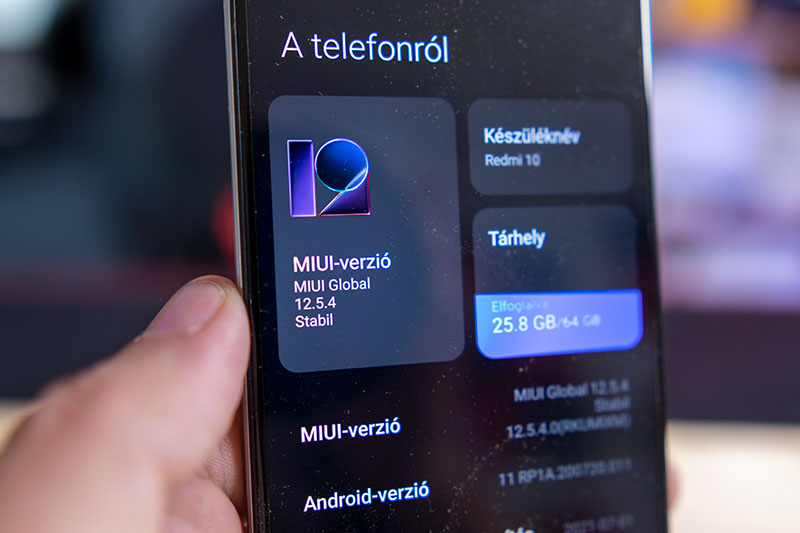
Of course, we have millions of themes, but if you don’t want to change a complete theme, you can choose from plenty of wallpapers.
Although MIUI 12.5 is not considered a full-fledged version, it is still much more than a wrinkle stitching of plain version 12. Lots of everything has changed since the base 12. For example, we got a new shutter, on one side of which we can see the notifications and on the other side we can see the settings.
A lot of work was done on the design, icons and animations at Xiaomin, so with 12.5 we got an almost completely new interface. Of course, not only have changes been made externally, Xiaomi said the power requirements of the operating system have also been significantly reduced.
No exaggeration, MIUI is one of the main arguments I don’t think about in phones from other manufacturers, though there would be some types I’d love to try.
Summary
So the story starts there, that I hoped for beef that after last year’s ninth series, this year we won’t be stabbed in the eye with good-sounding marketing rice, but will get really new and really frank phones. After Redmi Note 10 and Note 10 Pro, everyone already felt that Redmi 10 had to be good too, so it did!
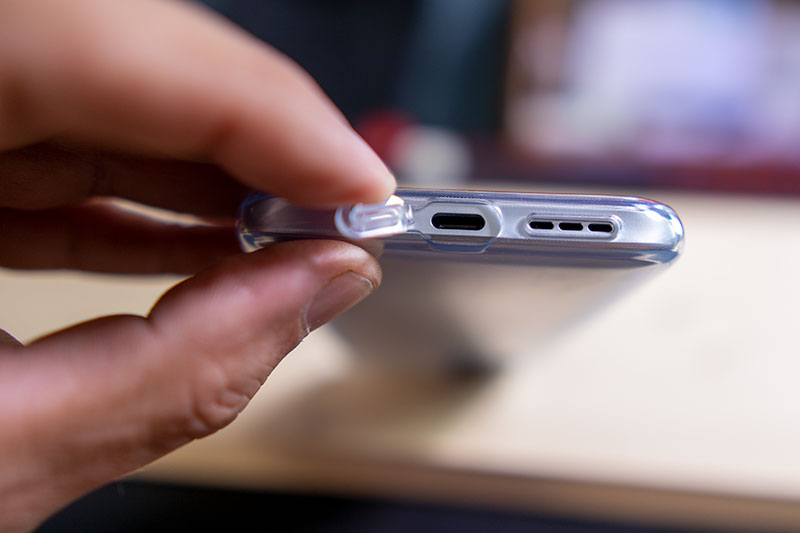
Browsing through the Redmi 10 specification, four things get caught our eye, that is, it catches our attention more accurately.
- IPS display, but with 90 Hz update
- A brand new central unit that was unveiled just a month ago
- A brand new sensor in the main camera, which is 48 megapixels instead of the usual 50
- There is NFC
If we look at this data, we can see that this phone is pushing the boundaries of the entry level strongly. It’s a bit like when a car type gets bigger year by year and then slips unnoticed from small cars to sedans.
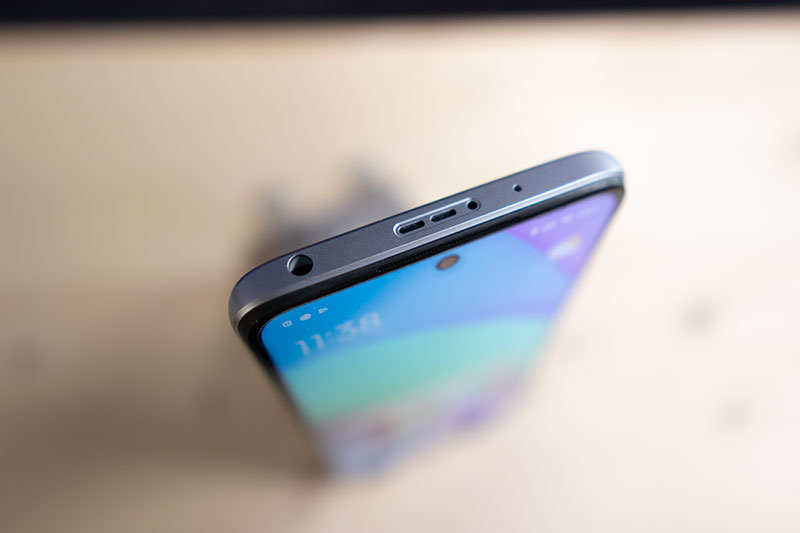
Well, Redmi 10 is already difficult to call an entry level because of its capabilities, or, it may be the entry level from now on. The latter would be really super.
However, the paper format is a bit deceptive as well, because it promises more than it gives.
The 90 Hz update of the display is very good, but few will notice the difference from the previous 60 Hz. Of course, IPS remained, it would be strange if the panel was already AMOLED in this price range. The brightness is super anyway, the colors are good, bright, the contrast is good, the viewing angle. That is, the display is good, but not (only) because of 90 Hz.
The central unit is also free, but not because it is so new. Regardless, it was good, as was its predecessor, the G85. He knows everything he needs, consumes little, has enough strength and muscle to make everything run. Of course, new capabilities were needed, as these made it possible to build a 50-megapixel main camera and a 90-inch display into the phone.
The main camera sensor at the entry level has better capabilities than usual. Samsung’s marketing is booming, according to the paper format, we should have got a prime camera, almost one that tramples on the 48-mega solutions so far.
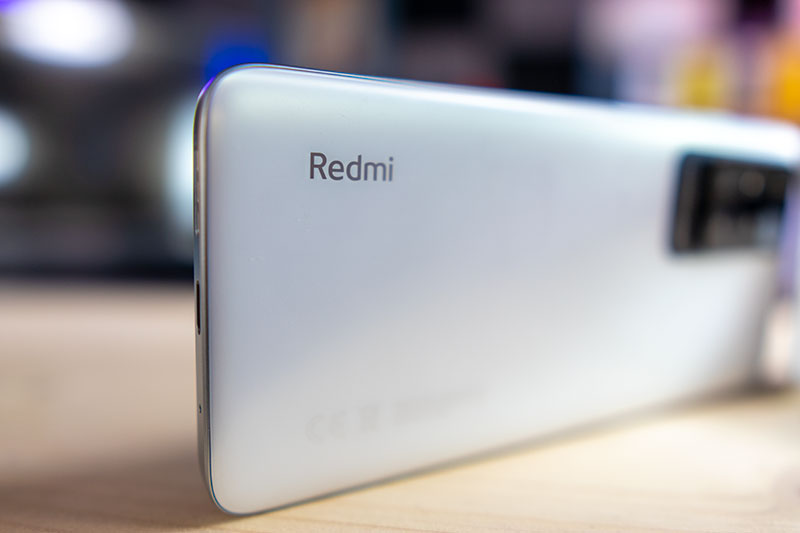
In comparison, the finished daytime pictures can be said to be a strong medium, and I would rate the videos as a medium at most. However, the evening shots were surprisingly good!
Interestingly, the performance of the ultra-wide camera is also not considered normal. Of course, that doesn’t mean we get crazy good pictures, “just” just that the result is good compared to the phone’s category, price, and even, in some ways, even the 50-megapixel main camera.
With regard to the cameras, it is important to highlight that the full setup (50 MP wide, 8 MP ultra wide, 2 MP macro) has been built in, which is quite unusual but an even more pleasant surprise for a Redmi 10-level entry-level phone.
The existence of NFC is an absolutely positive change from what has been the norm so far. Xiaomi has kept NFC in its phones as a premium category for a long time. We’ve already found it in Redmi Note 10 Pro this year, and now it’s also featured in the entry-level Redmi 10. I think this should really be a basic requirement these days because it is a minimum requirement to be able to pay with our phone without a credit card.
At the same time, I have to stress again that this phone, compared to being one of the weakest pieces in this year’s Redmi series, is still damn strong. It is strong against the competition and also strong compared to Redmi’s older handsets, the Redmi 8, Redmi 9. You could say a huge leap in the manufacturer’s capabilities.
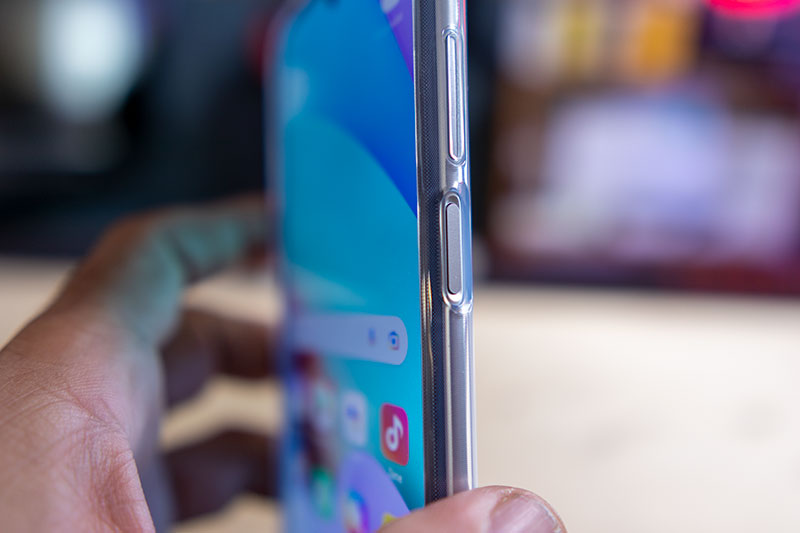
And if we say the hardware is super, what kind of marker does we have on the outside of the phone? Super-super, or lavish, or beautiful? Whichever one we use, the design quality doesn’t lag behind the Redmi Note 10 or the Redmi Note 10 Pro, and that’s very welcome again!
And the other capabilities aren't worth taking out anymore, as it would be unusual for a Xiaomi phone if something didn't work. Fortunately, everything works here too, it works well as a phone, the navigation is also super, the sound is stereo, there is infra, FM radio, so what you need, we get it.
As usual, the price remained at the end.
The phone is currently available in Carbon Gray. The 4/64 GB version costs € 179 and the 128 GB version costs € 199. You can find the $ 20 coupon (€ 20,00 Off over € 179,00) on the product page, click on it, it will deduct € 20 from the cart. Use the goboo25 coupon code, giving you an additional € 1000 discount on the first 5 phones. The first 200 customers will receive a handset as a gift, and each phone comes with a tempered glass screensaver.
It is important that the delivery is from a Spanish warehouse! Click on the link below to purchase:
Xiaomi Redmi 10 4/64 and 4/128 GB













